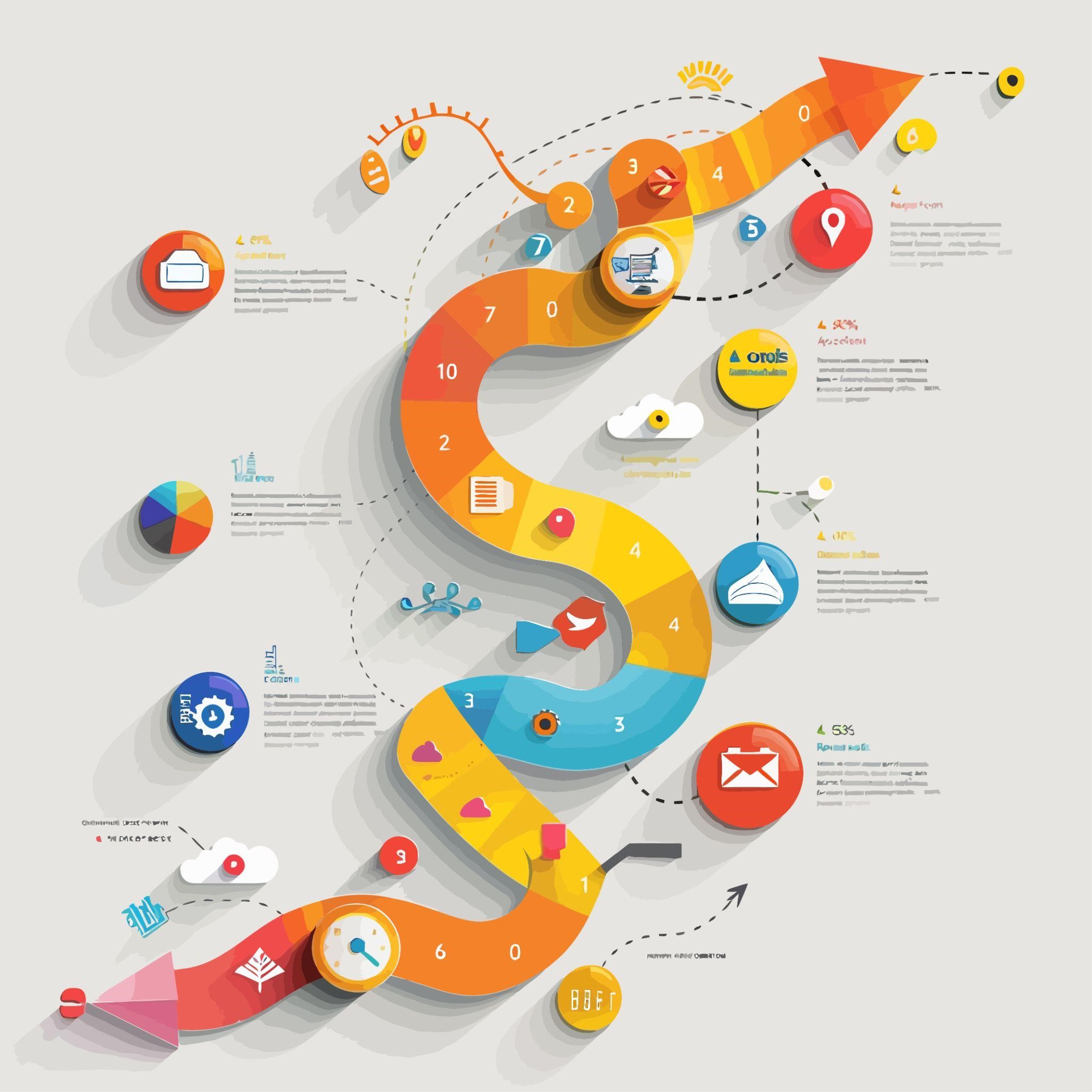5 Effective Techniques for Roadmap Communication with Stakeholders

Strong 8k brings an ultra-HD IPTV experience to your living room and your pocket.
Whenever you’re preparing or reviewing your product roadmap, the challenge is always the same: getting stakeholders on the same page. Some stakeholders want granular details, while others care only about high-level strategy. Then there’s the balancing act of managing expectations, addressing concerns, and ensuring alignment—all without letting the roadmap presentation spiral into confusion.
Stakeholder communication isn’t just a task. With the kind of creativeness it needs, you can call it an art. As someone managing products for years, you know the stakes: without clarity, even the best-laid plans can falter. A well-communicated roadmap, however, transforms complexity into clarity, bringing teams together and reinforcing your leadership.
In this article, you’ll discover five effective techniques for communicating your roadmap. These practical strategies will help you handle diverse stakeholder expectations, present with confidence, and build alignment, ensuring your roadmap becomes a tool for trust and action.
5 Techniques for Effective Roadmap Communication
Successful roadmap communication isn’t just about presenting data. It’s more about telling a story that resonates with every stakeholder. To achieve this, you need strategies that cater to different audiences, maintain transparency, and encourage collaboration.
Let’s dive into the techniques that will make your roadmap presentations impactful.
1. Tailor Your Communication to Your Audience
Not all stakeholders look at your roadmap the same way. Executives might care about strategic outcomes, while team leads focus on timelines and deliverables. That’s why tailoring your message is essential.
Start by identifying your audience and their priorities. For executives, highlight how the roadmap aligns with broader company goals. Use concise slides or dashboards to keep things focused. For teams, provide more detailed documentation and emphasize task-level dependencies. Adjust your tone and content accordingly—one size doesn’t fit all.
By tailoring your communication, you’re not just sharing a plan; you’re addressing their specific needs and showing them their concerns are valued. This approach ensures you keep everyone engaged and aligned, no matter the audience.
2. Use Visuals That Speak Volumes
A picture speaks a thousand words, and a well-designed visual roadmap can save hours of explanation. Stakeholders appreciate clarity, and visual roadmaps make it easier for everyone to see priorities, timelines, and dependencies at a glance.
Use tools like Gantt charts, Kanban boards, or timeline views to break down your roadmap visually. Highlight key milestones and phases with color coding to emphasize important aspects. Avoid overloading the chart with excessive detail—focus on what truly matters.
Visuals not only simplify your message but also create a shared understanding among stakeholders. With a clear visual representation, you’ll find fewer follow-up questions and more alignment during discussions.
3. Be Transparent About Prioritization
Stakeholders are often curious—and sometimes skeptical—about how decisions are made. Transparency in your prioritization process can eliminate unnecessary tension and build trust.
Clearly explain how features or tasks were ranked, whether it’s based on customer impact, technical feasibility, or strategic importance. Share the trade-offs you’ve considered and why certain items are deferred. Don’t shy away from discussing constraints, such as resource limitations or timeline pressures.
When stakeholders see the rationale behind your decisions, they’re more likely to trust your judgment and support the roadmap, even if compromises are involved. Transparency turns potential pushback into productive discussions.
4. Turn Presentations into Conversations
Roadmap communication shouldn’t be a monologue. Stakeholders have valuable insights, and encouraging dialogue ensures their voices are heard and concerns are addressed.
Invite questions and feedback during your presentation. Set aside time for discussions to clarify doubts or adjust priorities based on stakeholder input. Consider hosting smaller, focused sessions for different groups to foster open conversations.
Two-way dialogue isn’t just about hearing others—it’s about creating a sense of ownership among stakeholders. When they feel involved, they’re more invested in the roadmap’s success.
5. Follow Up and Keep Everyone in the Loop
A single presentation rarely suffices to keep everyone aligned. Follow-ups are critical to reinforce your message and keep stakeholders informed.
After your meeting, share a concise summary with key takeaways, next steps, and any pending questions. Regularly update stakeholders on progress and changes to the roadmap, whether through email updates or brief check-ins.
Consistent follow-ups demonstrate your commitment to transparency and keep the roadmap top of mind for stakeholders. This ongoing communication ensures alignment remains strong throughout the product’s lifecycle.
To Conclude…
Effective roadmap communication is the bridge between planning and execution. By tailoring your message, using clear visuals, maintaining transparency, fostering dialogue, and reinforcing communication, you can transform stakeholder engagement.
Remember, the goal is not just to present a roadmap but to create a shared understanding and alignment that propels your product’s success. Every conversation around the roadmap is an opportunity to build trust, clarity, and collaboration.
With these techniques in your support, you can lead productive discussions and ensure your roadmap becomes a powerful tool for decision-making and alignment. Stakeholders won’t just see your roadmap—they’ll believe in it.
Frequently Asked Questions
1. What is the purpose of a product roadmap?
A product roadmap outlines the strategic direction of a product, aligning teams and stakeholders on priorities, timelines, and goals to achieve business objectives.
2. How often should a product roadmap be updated?
Update your roadmap quarterly or as significant changes occur. Regular updates ensure stakeholders stay informed and the roadmap reflects current priorities and realities.
3. How do you handle conflicting stakeholder priorities?
Address conflicts by transparently discussing trade-offs and prioritization criteria. Emphasize aligning decisions with overarching business goals to gain consensus.
4. What should a visual roadmap include?
A visual roadmap should highlight key milestones, phases, and priorities. Use color coding and simple layouts to enhance clarity and avoid overwhelming stakeholders.
5. Why is stakeholder alignment important in roadmap communication?
Stakeholder alignment ensures that everyone works toward shared goals, reducing misunderstandings and building trust in the product development process.
6. What’s the best way to present a roadmap to executives?
Focus on high-level strategic outcomes, align with business goals, and use concise visuals. Keep presentations focused and avoid unnecessary details.
7. How do you manage roadmap changes?
Communicate changes promptly with rationale and impacts. Use follow-ups to reinforce transparency and keep stakeholders aligned with the evolving plan.
8. Can I share a roadmap with external stakeholders?
Yes, but ensure the shared version is high-level and omits sensitive details. Focus on strategic priorities and customer impact to maintain clarity and professionalism.
9. How can you promote trust during roadmap presentations?
Be transparent, encourage dialogue, and back your roadmap decisions with clear prioritization criteria. Trust grows when stakeholders feel heard and see consistency in your approach.
Note: IndiBlogHub features both user-submitted and editorial content. We do not verify third-party contributions. Read our Disclaimer and Privacy Policyfor details.


